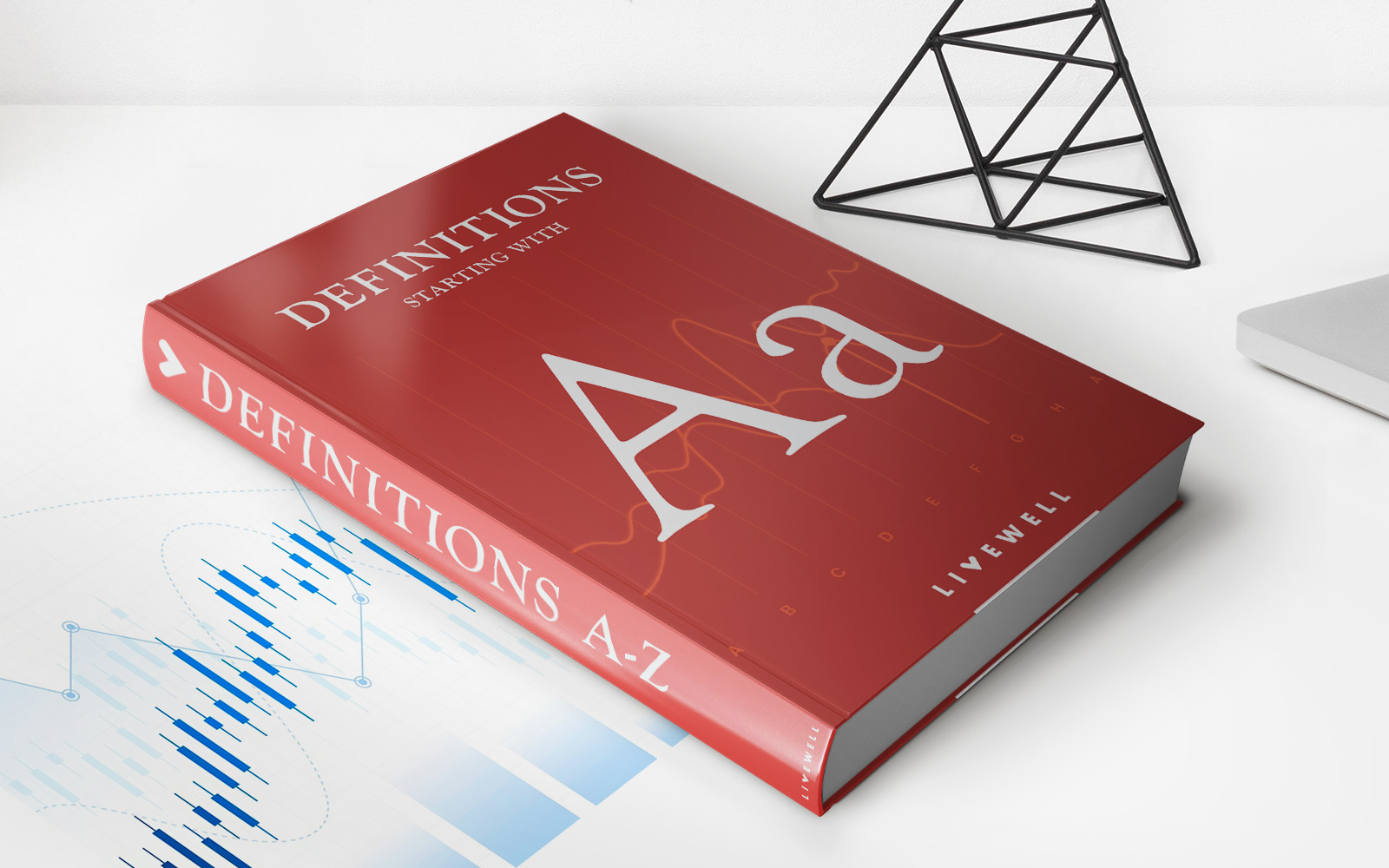

Finance
What Is The Dimensions Of A Credit Card
Published: October 27, 2023
Learn about the dimensions of a credit card and its importance in finance. Discover the standard size and shape of credit cards used for various financial transactions.
(Many of the links in this article redirect to a specific reviewed product. Your purchase of these products through affiliate links helps to generate commission for LiveWell, at no extra cost. Learn more)
Table of Contents
Introduction
When we think of a credit card, we often imagine a small, rectangular piece of plastic that fits neatly in our wallets. But have you ever wondered about the exact dimensions of a credit card? How thick is it? What are the standard specifications? In this article, we will explore the various dimensions of a credit card and delve into some interesting facts about their sizes.
Credit cards have become an essential part of our daily lives, offering convenience and flexibility in making purchases. Whether we use them for online shopping, paying bills, or making in-store transactions, credit cards have revolutionized the way we handle our finances. Understanding the dimensions of a credit card can be useful for various reasons, such as designing wallets or cardholders, creating custom cards, or simply satisfying our curiosity.
In the next sections, we will discuss the standard size and thickness of a credit card, as well as the ISO 7810 specifications. We will also explore variations in dimensions and touch upon non-standard credit card sizes. Let’s dive in and unravel the secrets behind the dimensions of a credit card!
Standard Credit Card Size
The standard size of a credit card is determined by the International Organization for Standardization (ISO). The ISO sets the guidelines to ensure consistency in the dimensions of various cards, including credit cards. The most common standard size for a credit card is 3.375 inches (85.6 mm) in width and 2.125 inches (53.98 mm) in height.
This particular size, also known as the ID-1 format, is universally accepted and allows credit cards to fit seamlessly into wallets, cardholders, and card processing machines. The rectangular shape with rounded corners is designed for easy handling and convenient storage.
These standard dimensions have become the norm across the globe, making credit cards easily recognizable and interoperable. When designing products or systems that involve credit card usage, adhering to these dimensions ensures compatibility and a consistent user experience.
The rectangular shape and consistent size of credit cards also contribute to their durability. They are designed to withstand the wear and tear of everyday use, fitting snugly in wallets or other carrying devices without being too bulky or cumbersome.
Additionally, the aspect ratio of a standard credit card is 1.586:1. This means that the width is about 1.586 times the height, creating a visually pleasing and proportionate shape. This aspect ratio is also widely used in the design of other identification cards, such as driver’s licenses and identification badges.
Overall, the standard size of a credit card ensures uniformity and compatibility, allowing these financial tools to seamlessly integrate into our daily lives.
Thickness of a Credit Card
While the size of a credit card is straightforward to determine, the thickness may vary slightly. The standard thickness of a credit card is approximately 0.03 inches (0.76 mm) to 0.04 inches (1.02 mm). However, it is important to note that there can be minor differences in thickness due to various factors.
One of the reasons for slight variations in credit card thickness is the materials used in their production. Most credit cards are made from a combination of PVC (polyvinyl chloride) and other additives. The thickness of the PVC layer can impact the overall thickness of the card.
Another factor that can influence the thickness is the inclusion of additional features. Some credit cards have embedded chips or magnetic strips, which can slightly increase their thickness. These security features enhance the card’s functionality but may contribute to a slightly thicker profile.
In recent years, there has been a shift towards contactless payment technology, which allows users to make payments by tapping their cards on a reader. These contactless-enabled cards, also known as “smart cards,” may have a slightly different thickness to accommodate the embedded technology.
While there may be minor variations in thickness, it is crucial for credit cards to maintain a certain level of flexibility. This flexibility ensures that they can be easily inserted and removed from card readers, while still robust enough to withstand the daily wear and tear.
It is worth noting that the flexibility and thickness of credit cards are also regulated by the ISO standards. These standards define the maximum and minimum thickness limits to ensure compatibility with card processing machines and ensure a consistent user experience.
Overall, while credit cards generally have a standard thickness, minor variations may exist due to the materials used and additional features incorporated into the card design. These factors play a role in ensuring the functionality, durability, and compatibility of credit cards in various payment scenarios.
ISO 7810 Specifications
The International Organization for Standardization (ISO) has established a set of specifications, known as ISO 7810, that govern the dimensions and features of identification cards, including credit cards. These specifications ensure consistency and compatibility across different card types.
ISO 7810 defines several card sizes, with the ID-1 format being the most commonly used for credit cards. According to ISO 7810, the ID-1 format has a width of 85.6 mm (3.375 inches) and a height of 53.98 mm (2.125 inches). These dimensions, combined with rounded corners, create the familiar rectangular shape of a credit card.
In addition to the standard dimensions, ISO 7810 also outlines the thickness range for credit cards. The standard allows for a thickness between 0.76 mm (0.03 inches) and 1.02 mm (0.04 inches), ensuring that credit cards can fit easily into cardholders and are compatible with card processing machines.
The ISO 7810 specifications go beyond just physical dimensions. They also cover various features and characteristics of credit cards to ensure their durability and interoperability. These include guidelines on card material, resistance to bending and twisting, resistance to chemical exposure, and resistance to temperature extremes.
The ISO 7810 standards also define the positioning of key elements on a credit card, such as the embossed cardholder name, card number, and expiration date. These guidelines help maintain consistency and readability across different card designs.
Furthermore, ISO 7810 addresses the use of visually recognizable security features on credit cards. This includes holograms, watermarks, UV printing, and other methods of enhancing the security and authenticity of the card.
By adhering to ISO 7810 specifications, credit card issuers and manufacturers ensure that their cards meet industry standards, are widely accepted, and provide a reliable and consistent user experience. These standards play a vital role in enabling seamless transactions and ensuring the integrity of personal and financial information.
Variations in Dimensions
While the standard size and thickness of a credit card are well-defined by ISO 7810, there can still be variations in dimensions among different types of credit cards. These variations can arise due to customization options provided by credit card issuers, regional preferences, or specific card requirements.
One common variation in dimensions is the size of contactless-enabled credit cards. These cards often have a slightly larger width and height compared to traditional credit cards. The additional size accommodates the embedded antenna and chip necessary for contactless communication with payment terminals.
Some credit card issuers also offer premium or co-branded cards with unique dimensions. These cards may have different width or height measurements to set them apart from standard cards. Examples include metal credit cards or luxury cards that aim to provide a more exclusive and premium feel.
In certain regions, such as Europe, credit cards may follow the “ISO/IEC 7810 ID-1” format, which has slightly different width and height measurements compared to the standard ID-1 format. This variation ensures compatibility with regional card processing systems and standards.
Aside from dimensional variations, credit cards can also differ in terms of design elements and cardholder information placement. While the standard guidelines define the position of key elements, issuers may have some flexibility in customizing the appearance of their cards. This can include variations in font size, card background colors, or the placement of logos and branding elements.
It is important to note that while these variations exist, credit card issuers still need to adhere to certain industry standards to ensure compatibility and acceptance by card processing machines. This allows cardholders to use their cards without any issues, regardless of any minor differences in dimensions or design.
Overall, variations in credit card dimensions are primarily influenced by customization options, regional preferences, and specific card requirements. These variations add diversity to the credit card landscape, allowing individuals to choose cards that suit their personal style and needs.
Non-standard Credit Card Sizes
While the majority of credit cards adhere to the standardized dimensions set by ISO 7810, there are instances where non-standard credit card sizes exist. These variations in size can be found in special-purpose or niche credit cards that cater to specific industries or unique applications.
One such example is the “mini” or “micro” credit card size. These smaller-sized cards are typically used for promotional purposes or as a novelty item. With dimensions smaller than the traditional credit card size, mini cards can be a fun and creative way for businesses to advertise their brands or provide limited-time offers.
On the other end of the spectrum, some specialty credit cards may have larger dimensions. These oversized cards can feature intricate designs, artwork, or enhanced functionality. For example, some co-branded credit cards with sports teams or luxury brands may opt for a larger size to make a bold statement.
In certain industries, such as the hospitality sector, non-standard credit card sizes may be used as key cards for hotel room access. These key cards typically have a different shape and size to accommodate the necessary technology for door entry and hotel guest identification.
Additionally, some credit cards designed for individuals with visual impairments may have larger dimensions or tactile features to improve usability and accessibility. These specialized cards often have embossed numbers or Braille markings to assist individuals in identifying and using their cards.
It’s important to note that non-standard credit card sizes may have limited acceptance or compatibility with card processing machines. Therefore, it’s crucial for cardholders to be aware of the specific requirements and limitations associated with these unique-sized credit cards.
While non-standard credit card sizes offer creativity and customization, it’s essential for issuers and users to consider their practicality and usage requirements. The majority of credit cards continue to adhere to the standardized dimensions to ensure seamless integration into existing systems and widespread acceptance across merchant locations.
Conclusion
Credit cards have become an integral part of our financial lives, providing convenience and flexibility in our transactions. Understanding the dimensions of a credit card can give us insight into their design, functionality, and compatibility with card processing systems. The International Organization for Standardization (ISO) has established guidelines, known as ISO 7810, to ensure consistency in credit card dimensions.
The standard size of a credit card is 3.375 inches (85.6 mm) in width and 2.125 inches (53.98 mm) in height, with rounded corners. This ID-1 format is universally accepted and fits seamlessly into wallets, cardholders, and payment terminals.
The thickness of a credit card typically ranges from 0.03 inches (0.76 mm) to 0.04 inches (1.02 mm) and is designed to balance durability and flexibility.
While most credit cards follow these standard dimensions, there can be variations in size. Non-standard credit card sizes may be found in specialty and promotional cards, mini or micro-sized cards, larger oversized cards for branding purposes, and specialized cards for unique applications such as hotel key cards or accessibility for visually impaired individuals.
It’s important to note that while variations exist, ensuring compatibility with card processing machines and adhering to industry standards is crucial for widespread acceptance and usage.
In conclusion, the dimensions of a credit card play a vital role in their design, functionality, and everyday usability. By understanding the standard dimensions and being aware of variations, cardholders can make informed choices, while businesses can create visually appealing and unique credit card designs.














